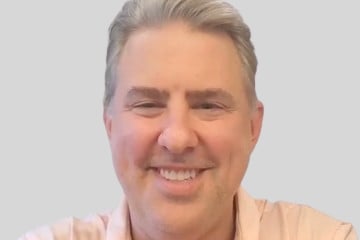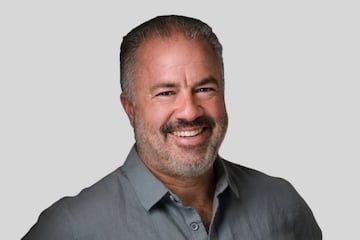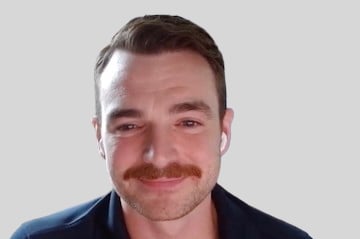CFO: Brands Rarely Max Out Meta Ads

Abir Syed is an accountant turned marketer turned chief financial officer. He says ecommerce marketing success largely depends on creative volume, and few merchants have exhausted any channel, much less Meta.
Abir is co-founder of UpCounting, an accounting and fractional CFO firm in Montréal, Canada. In our recent conversation, he shared common financial mistakes of merchants, key metrics to monitor, and, yes, how to grow ad revenue on Meta.
The entire audio of our conversation is embedded below. The transcript is edited for clarity and length.
Eric Bandholz: Who are you and what do you do?
Abir Syed: I am the co-founder of UpCounting, an accounting and fractional chief financial officer firm focused on ecommerce. We handle everything from basic bookkeeping and transactional work to high-level needs, such as due diligence, back-office implementations, cash flow forecasting, and financial modeling.
I am also a certified public accountant and previously ran both an ecommerce brand and a marketing agency. Most finance professionals lack hands-on experience in advertising or customer acquisition, but I have lived those challenges, and that background significantly shapes how I advise founders.
Marketing is usually an ecommerce brand’s most significant expense; understanding it is essential for providing meaningful financial guidance. So we structure our reporting, dashboards, and forecasting around the realities of ecommerce operations — not just accounting accuracy but actionable insights tied to contribution margin, customer behavior, marketing performance, and growth strategy.
Bandholz: What is the most common financial mistake founders make?
Syed: I see three major issues repeatedly. First, many founders track the wrong numbers. They monitor revenue or look at profit once a month, but rarely examine contribution margin or cash flow. Contribution margin is often ignored entirely, leading to major blind spots. Top-line revenue means little without understanding the economics underneath.
Second, operators often misunderstand what is required to enable growth. I am frequently asked to review struggling ad accounts. A recurring issue is underinvesting in creativity. Founders try to force growth by pushing return on ad spend harder, rather than improving the creative foundation required to scale spend while maintaining healthy acquisition costs.
Third, omnichannel brands frequently fail to separate channel performance. I see profit and loss statements with a single cost of goods sold line combining, say, Shopify, Amazon, and wholesale. Blending everything prevents founders from seeing how each channel is truly performing. Wholesale, for instance, operates on a very different cash cycle.
Bandholz: How often should operators review their financials?
Syed: It depends on the business’s size, complexity, and growth goals.
Most operators should review key historical metrics weekly — cash flow, expenses, and anything unusual moving through the business. A weekly cadence helps identify problems early.
More detailed reporting, such as margin and channel breakdowns, is usually best reviewed monthly. That interval provides cleaner data and enough distance to spot trends rather than reacting to noise.
The most overlooked piece is forecasting. Few brands build forward-looking financial models because it is difficult, yet essential for aggressive growth. Forecasting helps you understand the implications of scaling. Conservative operators can get away without it, but brands pushing hard need projections. Too many founders grow quickly with no plan, no modeling, and no clarity on future cash needs.
Bandholz: How do you decide if a marketing channel is maxed out?
Syed: It is difficult to know with total certainty, but in most cases, brands have not truly saturated a channel, especially Meta. There is usually far more room available than teams realize.
I often compare similar brands in the same category. One might spend $200,000 a month on Meta while also allocating resources to podcasts, TikTok, affiliates, and other channels. Another in the same space might spend $200,000 a day on Meta. They often have similar products, audiences, and brand quality. The difference is creative volume. The larger spender produces an enormous amount of fresh creative, while the other is effectively using a strategy from years ago.
Most brands have not come close to saturating Meta. They are simply underfunding creative strategy.
Increasing creative volume opens new audience pockets and helps find additional winning ads. If the creative that got you to $200,000 in monthly sales has plateaued, you must increase output to climb further. The more the creative volume, the higher the revenue. The pace depends on profitability, reinvestment capacity, creative quality, and a bit of luck.
Working with a media-buying agency that also produces creative can cost upwards of $7,000 per month, ideally under 10% of ad spend. Smaller brands may temporarily spend as much as 30%.
Bandholz: How should brands budget for bookkeeping?
Syed: Smaller brands face a minimum cost for competent bookkeeping. Hiring in-house rarely makes sense until the company is very large. A Shopify-only brand doing $1–5 million annually should expect to spend $2,000-$3,000 per month. Cheaper options exist, but the trade-off is often lower accuracy and weaker communication.
The challenge is that many founders cannot discern whether financial data is clean. It is similar to hiring an internet security expert when you lack technical knowledge — you might overlook major issues until something breaks. We have onboarded many clients who tried cheaper options, only to find their data was consistently incorrect.
To scale aggressively or make data-driven decisions, you need accurate, timely financials and guidance on interpreting them.
Once a brand surpasses roughly $5 million in annual sales, bookkeeping for multiple sales channels typically costs $5,000 to $8,000 per month.
Bandholz: Where can people support you, hire you, follow you?
Abir: Our site is UpCounting.com. I’m on LinkedIn, Instagram, and X.









